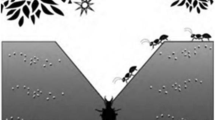Abstract
As is affected by many factors, mid-long term power load forecasting has become the nonlinear and multi-dimension complex problem, and its accuracy affects the decision and layout of power generation sector. In order to improve the accuracy and convergence ability of the single least square support vector machine (LSSVM), this paper proposes the improved fruit fly optimization algorithm applied to wavelet least square support vector machine (IFOA-w-LSSVM). Firstly, the Gaussian kernel function of LSSVM is replaced by the wavelet kernel function and wavelet least square support vector machine (w-LSSVM) is built. Secondly, the ordinary fruit fly optimization algorithm (FOA) is improved from three aspects: (1) dividing fruit fly group into two parts: (2) improving the taste detection function; (3) using Cauchy mutation process to make fruit fly individuals variant. Finally, w-LSSVM is optimized by IFOA for seeking the optimal parameters and achieving the forecasting accuracy. Additionally, the example verification results show that the proposed model outperforms other alternative methods and has a strong effectiveness and feasibility in mid-long term power load forecasting.











Similar content being viewed by others
References
Bao Y, Hu Z, Xiong T (2013) A PSO and pattern search based memetic algorithm for SVMs parameters optimization. Neurocomputing 117:98–106
Bao Y, Xiong T, Hu Z (2014) Multi-step-ahead time series prediction using multiple-output support vector regression. Neurocomputing 129:482–493
Bao Y, Xiong T, Hu Z (2014) PSO-MISMO modeling strategy for multistep-ahead time series prediction. IEEE Ttrans Cybern 44(5):655
Ben Taieb S, Bontempi G, Atiya AF, Sorjamaa A (2012) A review and comparison of strategies for multi-step ahead time series forecasting based on the NN5 forecasting competition. Expert Syst Appl 39:7067–7083
Corporation HP (2013) Electricity load forecasting using support vector regression with memetic algorithms. Sci World J 26(11):292575
Elattar EE, Goulermas J, Wu QH (2010) Electric load forecasting based on locally weighted support vector regression. IEEE Trans Syst Man Cybern Part C: Appl Rev 40(4):438–447
Han J, Wang P, Yang X (2012) Tuning of PID controller based on fruit fly optimization algorithm. International conference on mechatronics and automation (ICMA), 2012, IEEE, pp 409–413
Hong WC (2010) Application of chaotic ant swarm optimization in electric load forecasting. Energy Policy 38(10):5830–5839
Hong WC (2011) Electric load forecasting by seasonal recurrent SVR (support vector regression) with chaotic artificial bee colony algorithm. Energy 36(9):5568–5578
Hu Z, Bao Y, Xiong T (2014) Comprehensive learning particle swarm optimization based memetic algorithm for model selection in short-term load forecasting using support vector regression. Appl Soft Comput 25:15–25
Hu Z, Bao Y, Xiong T et al (2015) Hybrid filter-wrapper feature selection for short-term load forecasting. Eng Appl Artif Intell 40:17–27
Hu Z, Bao Y, Chiong R et al (2015b) Mid-term interval load forecasting using multi-output support vector regression with a memetic algorithm for feature selection. Energy 84:419–431
Kang J, Tang LW, Zuo XZ et al (2011) Data prediction and fusion in a sensor network based on grey wavelet kernel partial least squares. J Vibr Shock 30(4):144–149
Li J, Dong H (2008) Modeling of chaotic systems using wavelet kernel partial least squares regression method. Acta Phys Sinica 57(8):4756–4765
Li H, Guo S, Zhao H et al (2012) Annual electric load forecasting by a least squares support vector machine with a fruit fly optimization algorithm. Energies 5(11):4430–4445
Liao GC (2014) Hybrid improved differential evolution and wavelet neural network with load forecasting problem of air conditioning. Int J Electr Power Energy Syst 61:673–682
Mao L, Jiang Y (2008) Medium-and long-term load forecasting based on partial least squares regression analysis. Power Syst Technol 19:020
Pan WT (2012) A new fruit fly optimization algorithm: taking the financial distress model as an example. Knowl Based Syst 26:69–74
Wang Y, Niu D, Lee VCS (2011) Optimizing of bp neural network based on genetic algorithms in power load forecasting. IECON 2011—37th annual conference on IEEE industrial electronics society, IEEE, 2011, pp 4322–4327
Wang J, Li L, Niu D et al (2012) An annual load forecasting model based on support vector regression with differential evolution algorithm. Appl Energy 94:65–70
Wang X, Du K, Qin B et al (2012) Drying rate modeling based on FOALSSVR. Control Eng China 4:023
Wang L, Zheng X, Wang S (2013) A novel binary fruit fly optimization algorithm for solving the multidimensional knapsack problem. Knowl Based Syst 48:17–23
Xiong T, Bao Y, Hu Z (2013) Beyond one-step-ahead forecasting: evaluation of alternative multi-step-ahead forecasting models for crude oil prices. Energy Econ 40:405–415
Xiong T, Bao Y, Hu Z (2014) Does restraining end effect matter in EMD-based modeling framework for time series prediction? Some experimental evidences. Neurocomputing 123:174–184
Author information
Authors and Affiliations
Corresponding author
Rights and permissions
About this article
Cite this article
Dongxiao, N., Tiannan, M. & Bingyi, L. Power load forecasting by wavelet least squares support vector machine with improved fruit fly optimization algorithm. J Comb Optim 33, 1122–1143 (2017). https://doi.org/10.1007/s10878-016-0027-7
Published:
Issue Date:
DOI: https://doi.org/10.1007/s10878-016-0027-7




